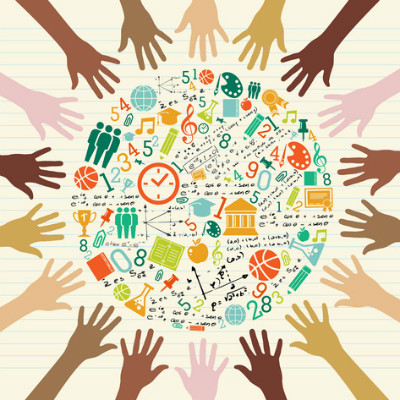We are one year closer to the 2030 deadline for the United Nations' Sustainable Development Goals, and when it comes to education, it does not appear that we are on track. If current trends continue, by 2030, nearly one billion school-aged children will not have basic secondary skills needed to succeed in life and work. Of this population, the vast majority will live in low- and middle-income countries, where the International Commission on Financing Global Education Opportunity estimates that only four in 10 children of school age will have the minimum secondary-school-level skills needed for a successful future.
The good news is that we know that large-scale progress, in both getting children into school and learning, is possible—and possible for some of the most marginalized communities. In a report released last year by the Center for Universal Education, titled Millions Learning, we found successes in scaling improvements in children’s learning in many places around the world.

Drawing from current literature and an in-depth review of case studies, we have identified a “secret sauce to scaling quality education.” While certainly no rigid recipe for scaling exists, we have found 14 core ingredients that appear to contribute to scaling quality learning, with the right combination depending on the context. We’ve grouped these ingredients into four areas:
Design: Improving learning at scale starts with committed leaders planning for scale from the outset. As discussed in another SSIR post, planning for scale doesn’t imply limitless growth, but rather, a clear vision of what the endgame is and a theory of change about the best way to get there. We found that too often initiatives are designed and tested for effectiveness, but not for the efficiencies required for scale.
One essential element of designing for scale from the start is to develop programs and policies that students, parents, or teachers actually want—not ones that governments, practitioners, or funders think they need. BRAC candidly shared an example of one of its initial projects in the early 1970s in Bangladesh that was considered to be a “dismal failure” in this regard. While BRAC initially offered adult literacy and numeracy classes in the evening, assuming that was what the local community needed, the program had only a five percent retention rate after the first 18 months. Surveys showed that the villagers were actually more interested in learning about things more immediately useful in their daily lives, such as animal husbandry, health, and nutrition.
Delivery: As important as design is, it is also essential to pay attention to the operational realities of implementing or delivering at large-scale. We have found that this involves a combination of technical and political actions. It requires seizing opportunities to respond directly to immediate challenges facing countries, and harnessing new technology—not new gadgets to replace teachers, but tools to help overcome a specific barrier, such as poor roads or a lack of reading materials. For example, Media Center, a locally designed, distance learning secondary education program in the state of Amazonas in Brazil, employs multi-point videoconferencing to overcome long distances and limited roads between communities and secondary schools.
Finance: Expanding quality learning opportunities certainly takes resources, and, as the Global Partnership for Education detailed in a recent policy brief, domestic and international investments in education are still woefully inadequate to meet the educational needs of all children and youth. Access to those resources is no more important than how they are structured and allocated. Regardless of the source, we found that stability, flexibility, and predictability in financing are critical for scale that leads to lasting changes in children’s learning. Lesson Study, a peer-to-peer in-service teacher learning method, started in Japan and now has been adapted to more than 50 countries. When scaling the program to cover Zambia’s ten provinces, the country’s education ministry took a deliberate, step-by-step approach over ten years, and the Japan International Cooperation Agency remained a constant partner along the way.
An enabling environment: As critical as the above three aspects are, scaling does not happen in a vacuum. Evidence from our case studies and literature review shows that the ecosystem in which programs or policies operate plays a critical role in facilitating or impeding the scaling process. For good ideas to flourish and spread, government must accept responsibility for ensuring a quality education for all, reaching out to a range of partners, and considering new ways of improving learning.
In Honduras, the government recognized that it needed to rapidly expand secondary education in rural areas but had limited resources and capacity. It therefore allowed a local NGO, Asociación Bayán, to manage and implement an accredited, alternative secondary education program for rural youth known as Sistema de Aprendizaje Tutorial, while paying for the salaries of the programs’ teachers, or “tutors.”
At the end of the day, we don’t know what the future holds. According to the International Commission for Financing Global Education Opportunity, up to half of all jobs are at high risk of disappearing due to automation in the coming decades. The best way that we can prepare our children for a rapidly changing and uncertain future is by developing life-long learners, those who can adapt and acquire new knowledge and skills while filtering and analyzing a massive amount of information. This won’t mean identifying best practices or models to unfurl around the world, but rather spreading the enabling conditions that allow for innovative approaches to be tried, evaluated, continuously adapted, and spread.
Support SSIR’s coverage of cross-sector solutions to global challenges.
Help us further the reach of innovative ideas. Donate today.
Read more stories by Julia Gillard & Jenny Perlman Robinson.

